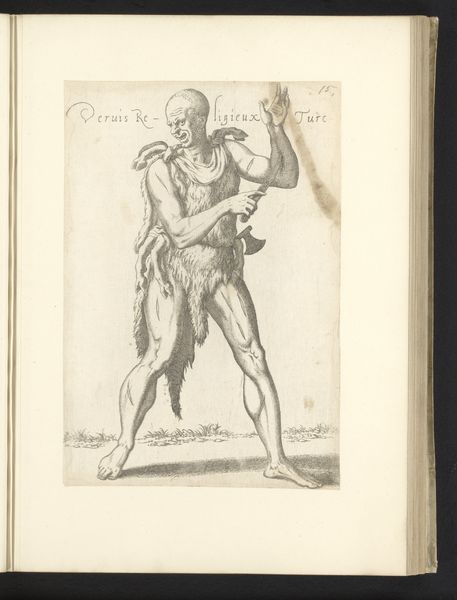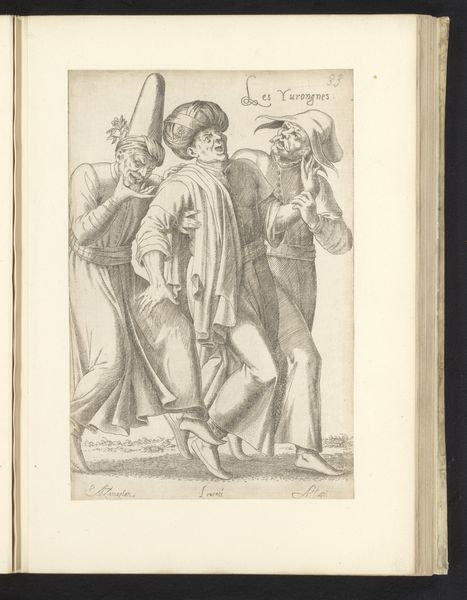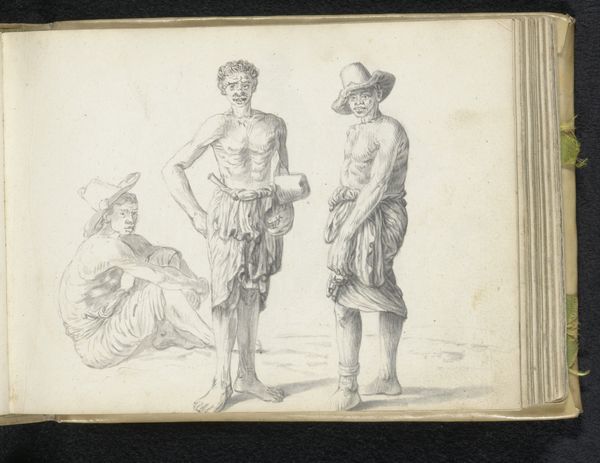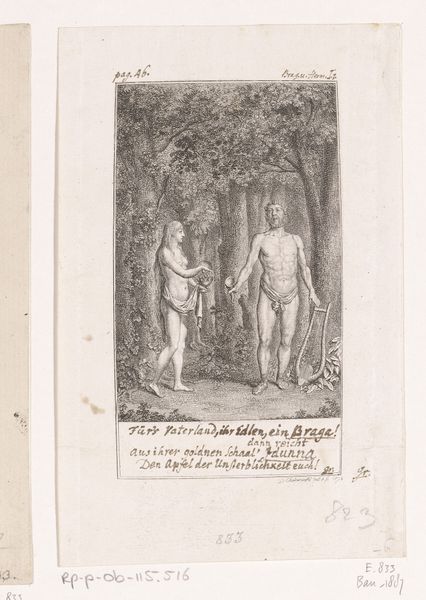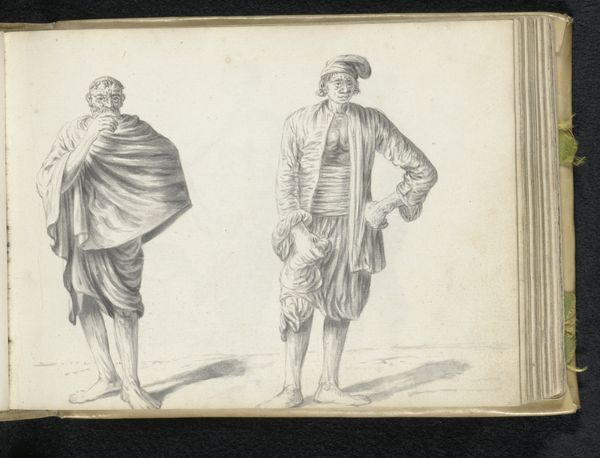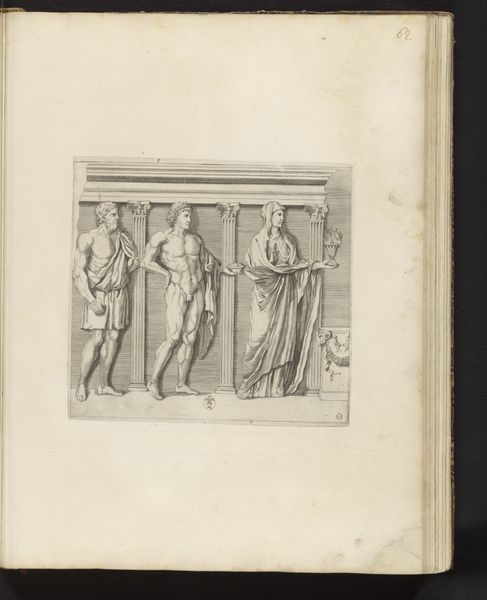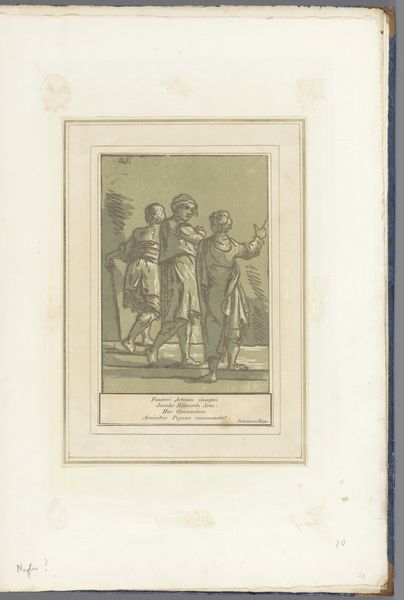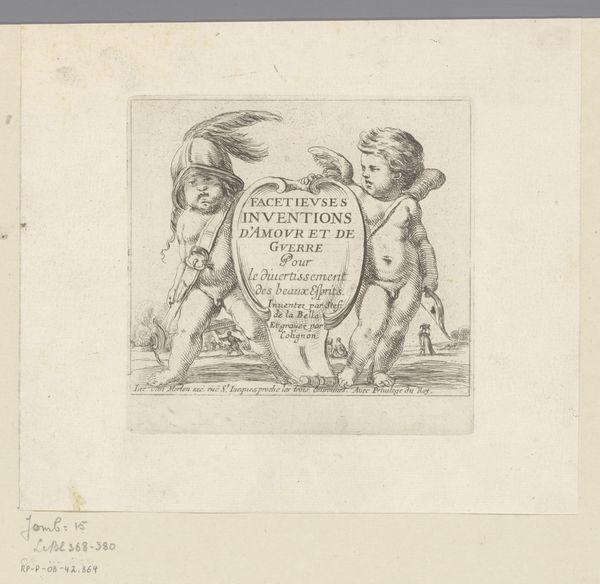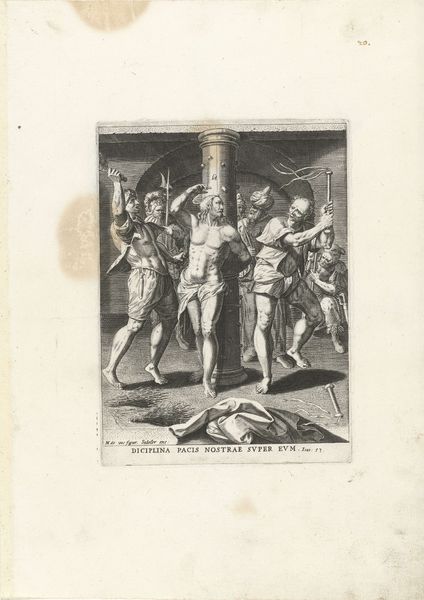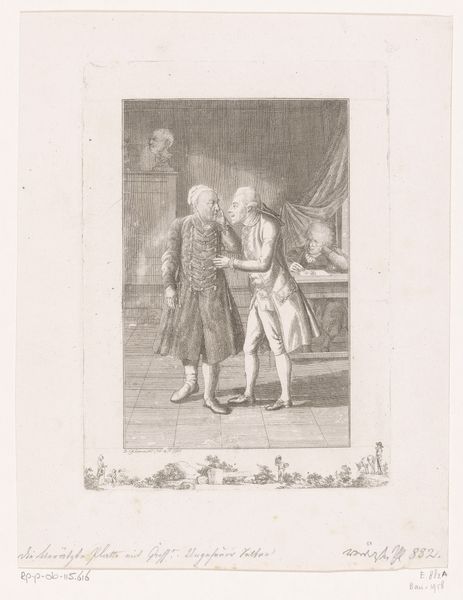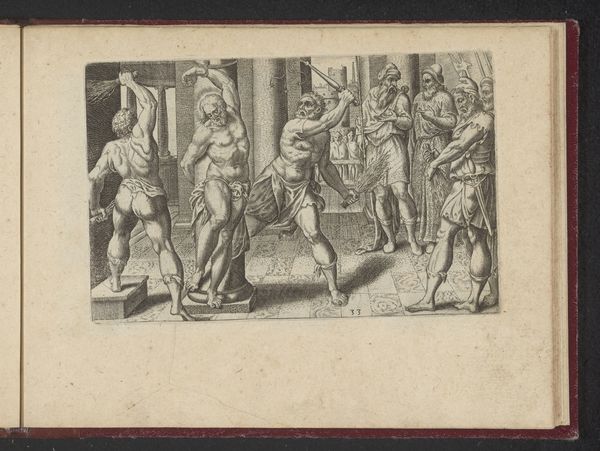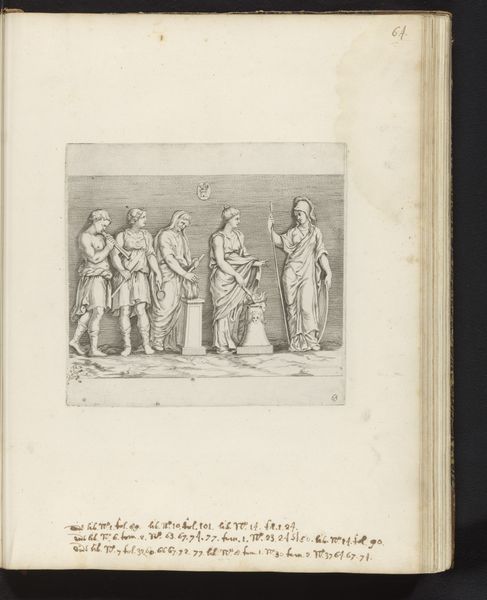
print, engraving
#
portrait
#
medieval
#
pen drawing
# print
#
figuration
#
genre-painting
#
history-painting
#
engraving
Dimensions: height 262 mm, width 176 mm
Copyright: Rijks Museum: Open Domain
Editor: This is "Drie Afrikaanse 'pleuianders' (vechters of worstelaars)," an engraving from sometime between 1555 and 1568 by Léon Davent. It shows three male figures, two appearing confrontational. What strikes me most is the oddly staged scene. How do we even begin to unpack the historical and cultural context here? Curator: That sense of "staging" is crucial. Prints like these often circulated as part of larger visual encyclopedias meant to depict and categorize the world for a European audience. Consider the title, literally "three African 'pleuianders' (fighters or wrestlers)." What assumptions are embedded in that framing? Editor: So, it’s not necessarily meant as an objective observation, but more a constructed image reflecting European perceptions of Africa? Curator: Exactly. The details, like the clothing and hairstyles, might tell us less about actual African practices and more about what Europeans *believed* to be African. Think about the role of the printing press itself. Who controlled it? Who consumed these images, and what was their agenda in shaping these representations? It’s about power, knowledge, and the creation of stereotypes. Editor: So, this engraving is a document, not so much *of* African people, but *of* European attitudes and the burgeoning age of exploration and, ultimately, colonization? Curator: Precisely. Consider how these images were used to reinforce a sense of European superiority and to justify imperial ambitions. Look at how they are presented to an European audience, in an artificial rendering of a fighting scene to portray Africa, like the name suggested. Editor: That makes me rethink my initial assumptions completely. I had been viewing it as a record but should focus on the socio-political dynamic between subject and artist, especially since these artworks might have contributed to a harmful perception about Africa. Curator: Exactly. By analyzing the artwork this way, we begin to examine not only the art object, but also how it shaped our understanding of it and how cultural powers have operated since the age of its making.
Comments
No comments
Be the first to comment and join the conversation on the ultimate creative platform.
